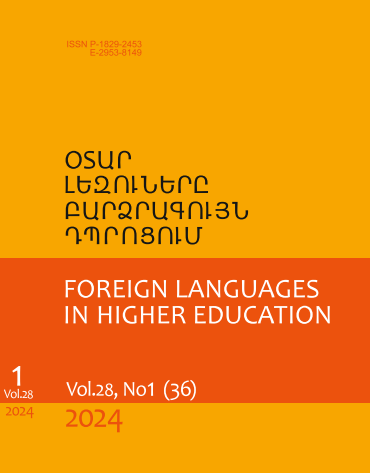Exploring Collaborative Writing in ESP Classes: Benefits, Challenges, and Approaches
DOI:
https://doi.org/10.46991/FLHE/2024.28.1.185Keywords:
collaborative writing, ESP class, artificial intelligence, writing skills, soft skills, multiple intelligencesAbstract
This paper highlights the strategic significance of collaborative writing with a specific focus on academic writing in English for Specific Purposes at the university level. It addresses challenges encountered by teachers and students and presents practical approaches, emphasizing the benefits of incorporating collaborative writing to enhance the development of writing skills within syllabus constraints. The study reviews various approaches to collaborative writing and explores the possibility of considering the inclusion of artificial intelligence as a partner in collaborative writing. The paper also illustrates Howard Gardner's theory of multiple intelligences applicable in collaborative writing, underscoring the significance of eight cognitive intelligences. Grouping students based on individual strengths encourages communication, fosters a conducive environment, and makes the process of cooperation more dynamic. As a practical application, the paper provides a tangible resource in the form of a detailed lesson plan tailored for an 80-minute class to further facilitate the process of integrating collaborative writing in an ESP class.
Downloads
Published
Issue
Section
License
Copyright (c) 2024 Irina Burnazyan, Lusine Bostanjyan, Anna Papoyan

This work is licensed under a Creative Commons Attribution-NonCommercial 4.0 International License.




